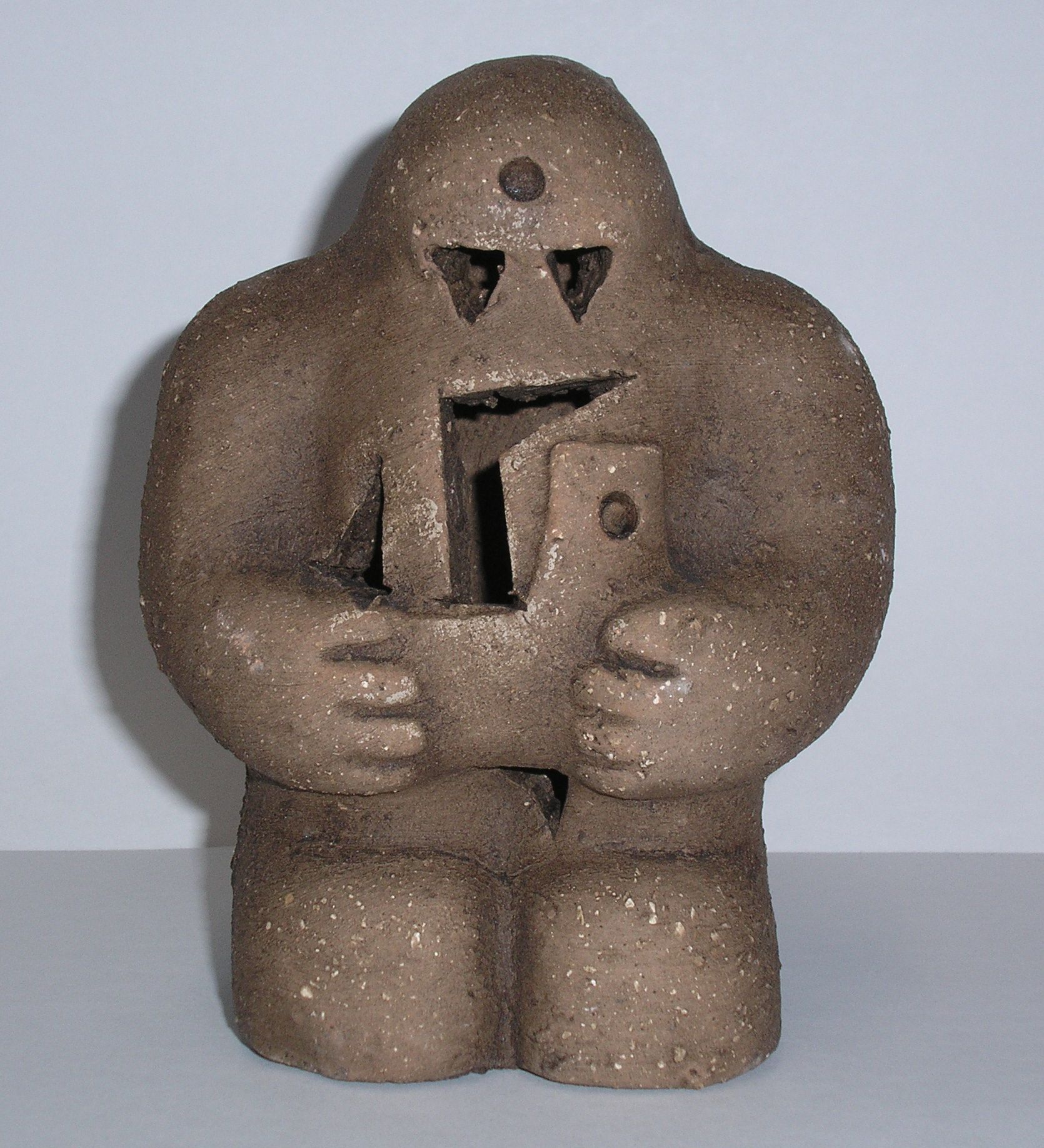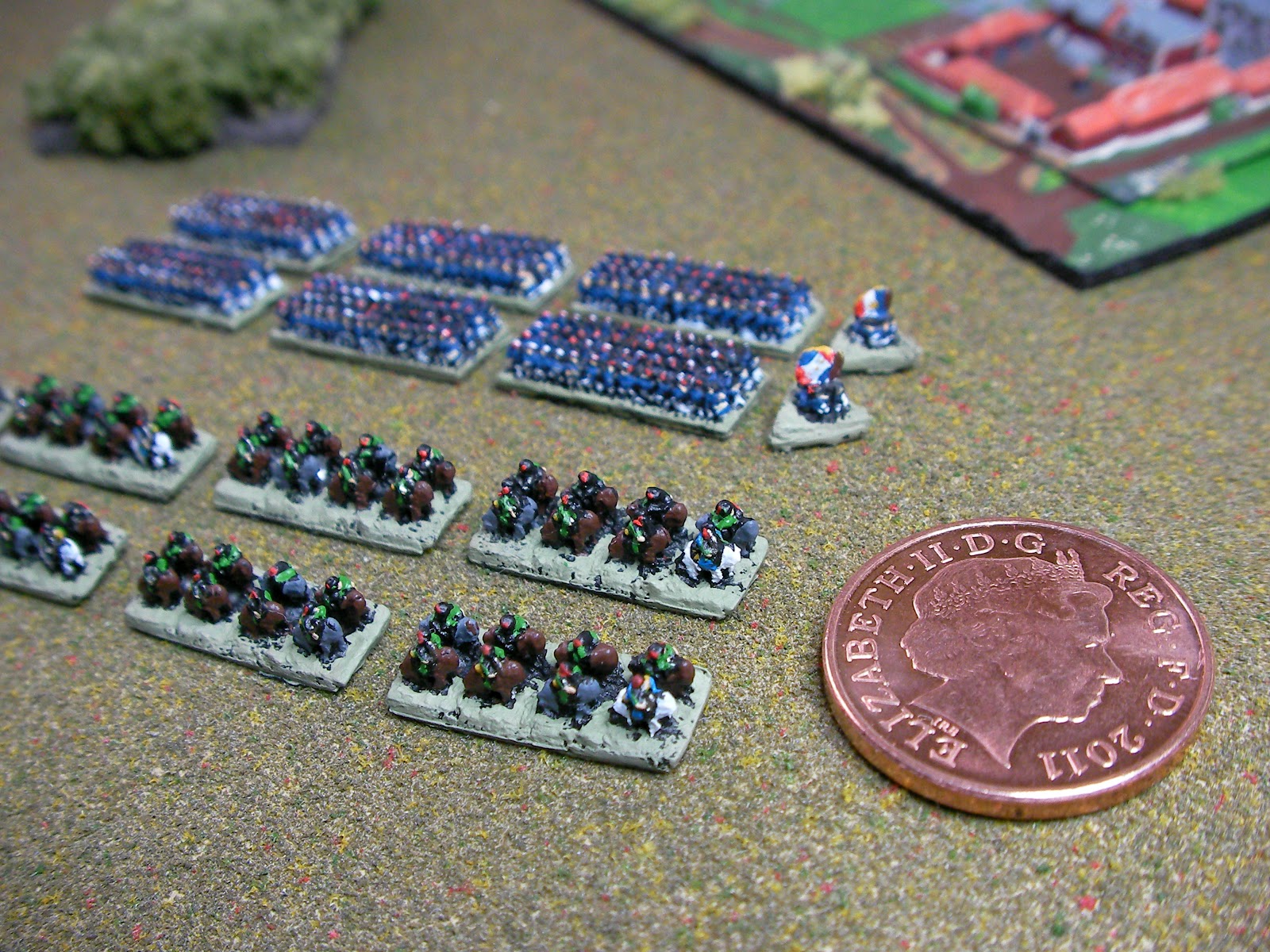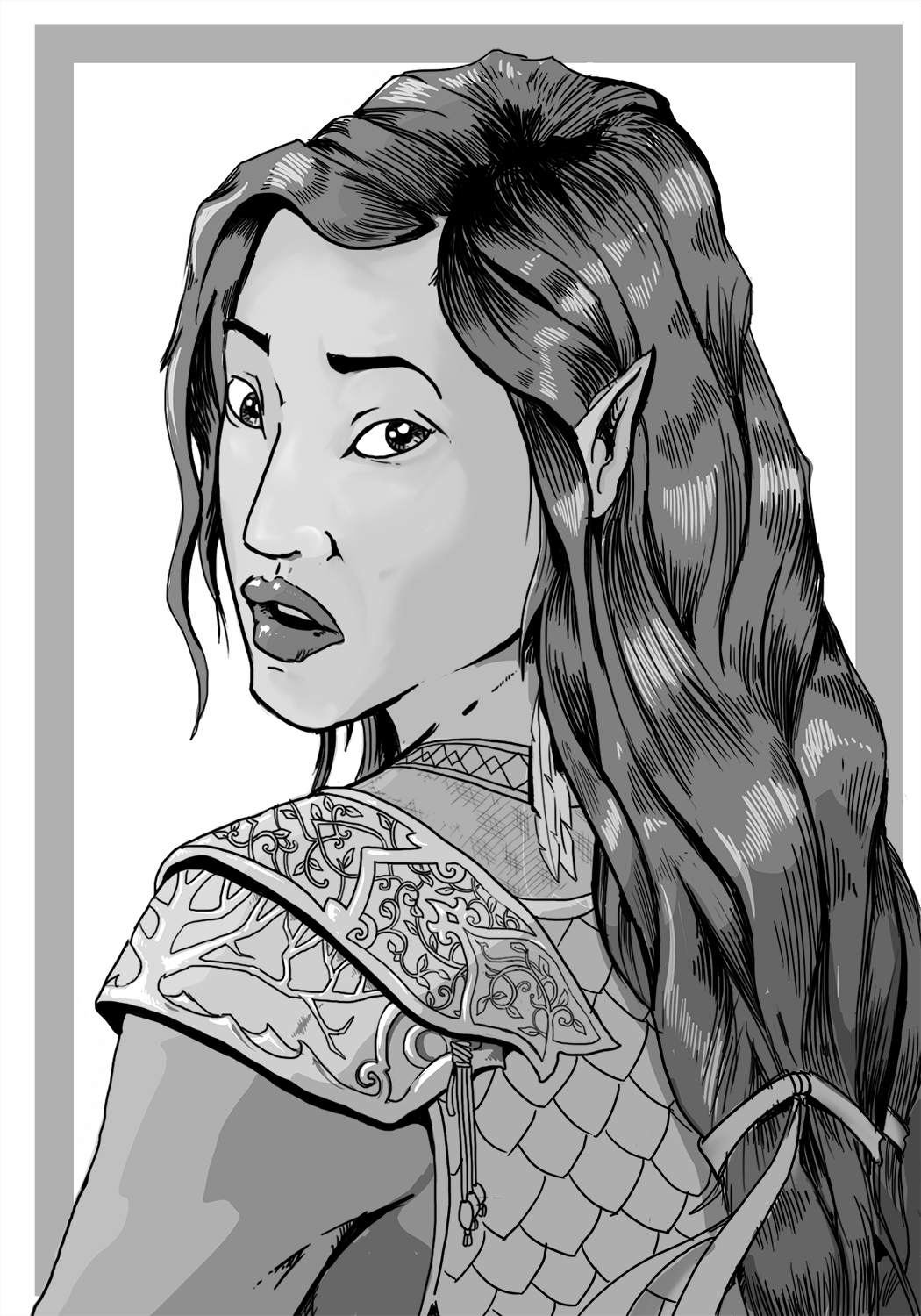|
Night Below
''Night Below: An Underdark Campaign'', often known as Night Below, is a boxed set for the second edition of the ''Advanced Dungeons & Dragons'' fantasy role-playing game. The set, with the product code TSR 1125, was published in 1995, and was written by Carl Sargent, with box cover art by Jeff Easley. Contents ''Night Below'' is a boxed set that includes three 64-page books ("Book I: The Evils of Haranshire", "Book II: Perils of the Underdark", and "Book III: The Sunless Sea"), 26 photocopyable player handouts on 16 sheets, an eight-page ''Monstrous Compendium'' supplement, eight referee reference cards, three double-sided full-color maps with tactical maps on the reverse suitable for use with Miniature figure (gaming), miniatures. ''Night Below'' is an adventure for four to eight first-level characters that will allow them to reach 14th level by the conclusion. The adventure breaks down into three parts (each with its own beginning, middle, and ending), each contained within i ... [...More Info...] [...Related Items...] OR: [Wikipedia] [Google] [Baidu] |
Carl Sargent
Carl Lynwood Sargent (11 December 1952 – 12 September 2018) was a British parapsychologist and author of several roleplaying game-based products and novels, who used the pen name Keith Martin to write ''Fighting Fantasy'' gamebooks. Early life and education Sargent was schooled in South Wales and the West of England. He then attended Churchill College, Cambridge, majoring in the natural sciences, and graduated with honours in psychology in 1974. He received a PhD in 1979 for a work which bore on parapsychology, and went on to undertake post-doctoral research in parapsychology at the Psychological Laboratory of the University of Cambridge. Sargent was the first parapsychologist to obtain a Cambridge doctorate. He taught psychology at the same university. Many of his experiments were made using students from the science and geography departments opposite the Psychology department on the Downing Site, paying £2-3 per experiment; the main task would be to guess the colour or value ... [...More Info...] [...Related Items...] OR: [Wikipedia] [Google] [Baidu] |
Druid (Dungeons & Dragons)
The druid is a playable character class in the ''Dungeons & Dragons'' fantasy role-playing game. Druids wield nature-themed magic. Unlike clerics, druids do not have special powers against undead and, in some editions, cannot use metal armor. Druids have a unique ability that allows them to change into various animal forms, and various other qualities that assist them in natural settings. Publication history Creative origins The druid is named for the pre-Christian Celtic priests called druids. In the book ''The Evolution of Fantasy Role-Playing Games'' (2014), Michael Tresca highlighted that "historically, druids did revere trees as nature spirits. ..Zoomorphism was common enough to justify druids transforming into all kinds of animals. ..Conspicuously lacking from Dungeons & Dragons is the role of sacrifices in druidic rituals". Original ''Dungeons & Dragons'' Druids appeared, but not as player characters, in the original ''Greyhawk'' supplement from 1974. They were prese ... [...More Info...] [...Related Items...] OR: [Wikipedia] [Google] [Baidu] |
Dragon (magazine)
''Dragon'' is one of the two official magazines for source material for the ''Dungeons & Dragons'' role-playing game and associated products, along with ''Dungeon (magazine), Dungeon''. TSR, Inc. originally launched the monthly printed magazine in 1976 to succeed the company's earlier publication, ''The Strategic Review''. The final printed issue was #359 in September 2007. Shortly after the last print issue shipped in mid-August 2007, Wizards of the Coast (part of Hasbro, Inc.), the publication's current copyright holder, relaunched ''Dragon'' as an online magazine, continuing on the numbering of the print edition. The last published issue was No. 430 in December 2013. A digital publication called ''Dragon+'', which replaces the ''Dragon'' magazine, launched in 2015. It is created by Dialect in collaboration with Wizards of the Coast, and its numbering system for issues started at No. 1. History TSR In 1975, TSR, Inc. began publishing ''The Strategic Review''. At the time ... [...More Info...] [...Related Items...] OR: [Wikipedia] [Google] [Baidu] |
Glen Angus
Glen Michael Angus (August 18, 1970 – July 19, 2007) was a Canadian artist whose work has appeared in role-playing games and video games. Early life Angus was born August 18, 1970, in Windsor, Ontario. He played the ''Dungeons & Dragons'' role-playing game as a child, which his father Jim Angus said cultivated his son's passion for the fantasy genre. Career Angus began producing interior illustrations for ''Dungeons & Dragons'' books in 1994. He also illustrated cards for the ''Magic: The Gathering'' collectible card game. He also worked for Ravensoft on the ''X-Men Legends'' video game, in which his art appeared. He worked for four years as an artist at Raven Software/Activision, and at the time of his death he was a principal artist for Ravensoft/Activision. Personal life Angus taught graphic and computer art at St. Clair College, which he previously attended. He taught there for five years as a teacher of illustration and graphic design. Angus and his family moved to Wisco ... [...More Info...] [...Related Items...] OR: [Wikipedia] [Google] [Baidu] |
Arnie Swekel
Arnie Swekel is an artist whose work has appeared in role-playing games. Background Swekel was born May 2, 1964, and grew up in River Rouge, Michigan. After graduating high school he briefly attended The Center for Creative Studies (now called College for Creative Studies) in Detroit but left after only one semester. Swekel's interest in art continued unabated, however and, while largely self-taught, began his career as a professional artist at age 27. Swekel currently works as a principal artist at the computer game company Raven Software and lives in the Madison Wisconsin area with his wife and three children. Works Arnie Swekel has continued to produce interior illustrations for many ''Dungeons & Dragons'' books and ''Dragon'' magazine since 1992, as well as cover art for ''Return to White Plume Mountain'' (1999), ''Psionics Handbook'' (2001), ''Manual of the Planes'' (2001), and ''Epic Level Handbook'' (2002). He has also produced artwork for many other games including ''Pendrag ... [...More Info...] [...Related Items...] OR: [Wikipedia] [Google] [Baidu] |
Golem (Dungeons & Dragons)
A golem ( ; he, , gōlem) is an animated, anthropomorphic being in Jewish folklore, which is entirely created from inanimate matter (usually clay or mud). The most famous golem narrative involves Judah Loew ben Bezalel, the late 16th-century rabbi of Prague. According to ''Moment'' magazine, "the golem is a highly mutable metaphor with seemingly limitless symbolism. It can be a victim or villain, Jew or non-Jew, man or woman—or sometimes both. Over the centuries, it has been used to connote war, community, isolation, hope, and despair."Cooper, MarilynJewish Word , Golem" ''Moment''. 17 July 2017. 24 August 2017. Etymology The word ''golem'' occurs once in the Bible in Psalm 139:16, which uses the word (; my golem), that means "my light form", "raw" material, connoting the unfinished human being before God's eyes. The Mishnah uses the term for an uncultivated person: "Seven characteristics are in an uncultivated person, and seven in a learned one", () (Pirkei Avot 5:7 in th ... [...More Info...] [...Related Items...] OR: [Wikipedia] [Google] [Baidu] |
Miniature Wargaming
Miniature wargaming is a form of wargaming in which military units are represented by miniature physical models on a model battlefield. The use of physical models to represent military units is in contrast to other tabletop wargames that use abstract pieces such as counters or blocks, or computer wargames which use virtual models. The primary benefit of using models is aesthetics, though in certain wargames the size and shape of the models can have practical consequences on how the match plays out. Miniature wargaming is typically a recreational form of wargaming because issues concerning scale can compromise realism too much for most serious military applications. A historical exception to this is naval wargaming before the advent of computers. Overview A miniature wargame is played with miniature models of soldiers, artillery, and vehicles on a model of a battlefield. The benefit of using models as opposed to abstract pieces is primarily an aesthetic one. Models offer a vis ... [...More Info...] [...Related Items...] OR: [Wikipedia] [Google] [Baidu] |
Elf (Dungeons & Dragons)
The elf is a humanoid race in the ''Dungeons & Dragons'' fantasy role-playing game, one of the primary races available for player characters, and play a central role in the narratives of many setting worlds of the game. Elves are renowned for their grace and mastery of magic and weapons such as the bow and sword. Becoming physically mature by the age of 25 and emotionally mature at around 125, Williams, Skip. ''Races of the Wild''. Wizards of the Coast, 2005. they are also famously long-lived, capable of living more than half a millennium and remaining physically youthful. Possessed of innate beauty and easy gracefulness, they are viewed as both wondrous and haughty by other races; however, their natural detachment is seen by some as introversion or xenophobia. They were usually antagonistic towards dwarves. There are numerous different subraces and subcultures of elves, including aquatic elves, dark elves (drow), deep elves (rockseer), grey elves, high elves, moon elves, sn ... [...More Info...] [...Related Items...] OR: [Wikipedia] [Google] [Baidu] |
Illithid
In the ''Dungeons & Dragons'' fantasy role-playing game, illithids (commonly known as mind flayers) are monstrous humanoid ''aberrations'' with psionic powers. In a typical ''Dungeons & Dragons'' campaign setting, they live in the moist caverns and cities of the enormous Underdark. Illithids believe themselves to be the dominant species of the multiverse and use other intelligent creatures as thralls, slaves, and chattel. Illithids are well known for making thralls out of other intelligent creatures, as well as feasting on their brains. Publication history Mind flayers were created by Gary Gygax, who has said that one of his inspirations for them was the cover painting of the Titus Crow book ''The Burrowers Beneath'' by Brian Lumley. Tim Kirk's cover art on the book, then in its first printing, depicted only the tentacles of the titular burrowers, the Chthonians. ''Dungeons & Dragons'' (1974–1976) Mind flayers first appeared in the official newsletter of TSR, ''The Strate ... [...More Info...] [...Related Items...] OR: [Wikipedia] [Google] [Baidu] |
Svirfneblin
In the ''Dungeons & Dragons'' fantasy role-playing game, gnomes are one of the core races available for play as player characters. Some speculate that they are closely related to dwarf (Dungeons & Dragons), dwarves; however, gnomes are smaller and more tolerant of other races, nature, and of Magic of Dungeons & Dragons, magic. Depending on the setting and subrace, they are often skilled with illusion magic or engineering. Gnomes are small humanoids, standing tall. Publication history The gnome is a player character race "often stereotyped as buffoons, illusionists, mad inventors, and many characters play them as intentionally "wacky" or "anachronistic"; a gnome often conforms to the trickster archetype, and is "predisposed towards a "good" moral alignment". Gnomes were originally introduced to ''Dungeons & Dragons'' as a new alternative to Dwarf (Dungeons & Dragons), dwarves, Elf (Dungeons & Dragons), elves, and Halfling (Dungeons & Dragons), halflings. They were developed f ... [...More Info...] [...Related Items...] OR: [Wikipedia] [Google] [Baidu] |
Underdark
The Underdark is a fictional setting which has appeared in ''Dungeons & Dragons'' role-playing campaigns and ''Dungeons & Dragons''-based fiction books, including the Legend of Drizzt series by R. A. Salvatore. It is described as a vast subterranean network of interconnected caverns and tunnels, stretching beneath entire continents and forming an underworld for surface settings. ''Polygon'' called it "one of ''D&D''s most well-known realms". Use in campaign settings The Underdark featured prominently in the campaign settings ''World of Greyhawk'' and the ''Forgotten Realms''. The concept of a dungeon that spanned a planet was first introduced by Gary Gygax in his D-series of game modules and at the end of the G-series. The Underdark was described in detail in the 1986 manual ''Dungeoneer's Survival Guide'', by Doug Niles. It was also part of the ''Eberron'' campaign setting, in which it was called Khyber and was home to evil beings driven deep into the caverns at the end of the ag ... [...More Info...] [...Related Items...] OR: [Wikipedia] [Google] [Baidu] |
Non-player Character
A non-player character (NPC), or non-playable character, is any character in a game that is not controlled by a player. The term originated in traditional tabletop role-playing games where it applies to characters controlled by the gamemaster or referee rather than by another player. In video games, this usually means a character controlled by the computer (instead of a player) that has a predetermined set of behaviors that potentially will impact gameplay, but will not necessarily be the product of true artificial intelligence. Role-playing games In a traditional tabletop role-playing game such as ''Dungeons & Dragons'', an NPC is a character portrayed by the gamemaster (GM). While the player characters (PCs) form the narrative's protagonists, non-player characters can be thought of as the "supporting cast" or "extras" of a roleplaying narrative. Non-player characters populate the fictional world of the game, and can fill any role not occupied by a player character. Non-player ... [...More Info...] [...Related Items...] OR: [Wikipedia] [Google] [Baidu] |



